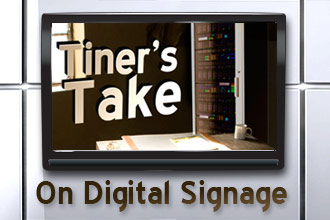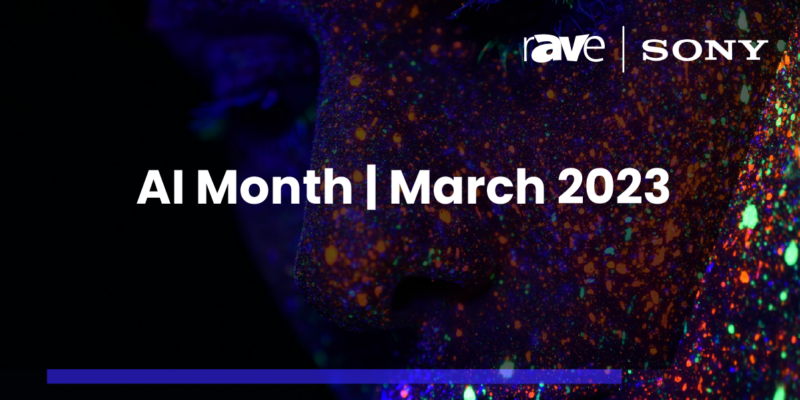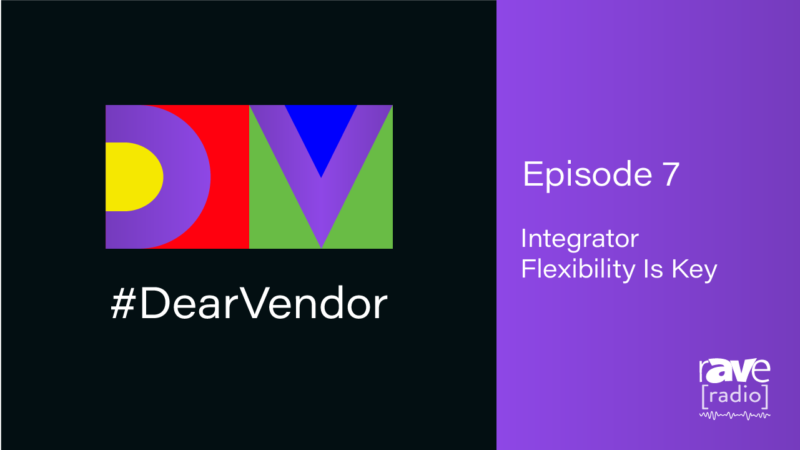Point of Transit Digital Signage in the Education Setting
 In my August column for rAVe DS I referenced a terrific column from Keith Kelsen. Last month I suggested you go and read his column before you read mine. I am doing the same this month: Go give it a read now if you have not yet read it.
In my August column for rAVe DS I referenced a terrific column from Keith Kelsen. Last month I suggested you go and read his column before you read mine. I am doing the same this month: Go give it a read now if you have not yet read it.
This month I want to discuss the Point of Transit (POT) in the educational environment. I believe this type of signage is the most mis-used around campuses. This is the type of signage that requires a “why?” and a “what?” Why are you putting the sign up? Why are you spending the capital? What problem are you trying to fix? What area are you trying to enhance? What is your expected result?
As a tech manager, I have always felt it is not my job to ask these questions. I want to be seen as a helpful “yes man,” not the person who poses constant challenges. I always like to try and find people who are in the correct position to ask why, and have them do it. In this case, I think your best resource on campus, will be your communications and media relations group. Every day they are tasked with getting messages across to people in the most efficient and effective manner. When they are asking your customers “why?” it won’t be seen as a challenge, but rather as a “how can I help you?” Very rarely (never in my experience) does someone want to install a digital sign just because it looks cool. Instead, they have a problem they are trying to solve or and area of their work they are trying to enhance.
Currently at Bates College, all of our digital signage is POT. It took some learning for us to get to a point where we knew what we were trying to get across and how to best get it across. No surprise — it was the communications office who helped answer these questions.
Some of our first digital sign content was literally a scan of a poster created for a bulletin board. The poster would be advertising a specific event and had a significant amount of text and details on it. Certainly, they were not anything that attracted attention, or that people in transit had time to stop and read. Additionally, they were designed as a vertical poster and then put on a horizontal screen, the resulting image was tiny. So, the question that needed to be asked was “what was your goal in this bulletin?” Our goal was to increase attendance at many of these events. There was a feeling that students, faculty and staff did not read many of the e-mail announcements and this was a way to get the word out. That was the problem, but what was happening was not the solution. Our communications department solved this by putting together a very attractive template that included a picture that took up 50 percent of the screen. Good pictures attract attention. The other half of the screen only allowed for very little text: the title of the performance, the date, the time and perhaps a very easy to remember link like bates.edu/magicshow. Suddenly, in the 10 seconds it takes you to pass the screen, you gather all the required information along with knowledge on how to access more information and you never needed to stop walking.
Another factor that your colleagues in media relations can help you with is understanding your audience. A couple of our digital signs are in lobbies that are stops during our campus tour. That means eight times per day there is an audience of five to 25 people standing in those lobbies. Those people are prospective students and their parents. Better yet, because the tours are so structured, we know within a couple of minutes when the tour will be in each location. So, your communications team can identify what they want the parents and students to see at that time. At Bates, we show academic award winners, such as Fulbright Scholars. We also show faculty publications (images and titles of books written by faculty). In another building, you could show awards that your arts faculty and students have achieved, or a list of recent performances by those groups. If used wisely, you can have different content at each location exactly as the tour arrives at the digital sign. In this case, the answer to “why” is to show off the best of our achievements in academic and the arts to potential students.
The professionals in your communications group can also help you with knowing when is the best time to NOT use a digital sign. I certainly learned that lesson. Our first digital sign, with content and design by yours truly, included a scrolling directory of faculty and staff in the building. With 25 plus faculty and staff, even at 5 seconds each, it took more than 2 minutes to wait for the whole list to scroll through. The best part was that if you turned your head 90 degrees, right there on the wall was a good, old-fashioned building directory. My communications group indicated to me that the scrolling directory was not the best use of screen real estate.
Also as important as knowing your audience for the POT is knowing how that audience changes over the course of the day. In your library, you probably don’t have many faculty or prospective students walking around at 11 p.m. (or later). What you do have are students who are working on their academics. What may be interesting to a student at that point? Well, there is the obvious of coffee and caffeine, and then more of the same. Point them to the library cafe, or the closest coffee spot on campus. They also may be interested in dates and deadlines, such as registering for classes, dropping classes, when final exams or mid-terms begin. Perhaps they are interested in resources like writing support or math support. Where are those resources located and what are their hours and contact information? A really sophisticated feature would be the ability to interact with the sign and request the currently availability of any peer tutors available at that exact time. At that point in their day, the students are probably NOT interested in what is happening for events around campus. Their minds are in a different place. In this case the “what” is answered with a “we are trying to make sure our students who are working on their academics know of resources available to them, and deadlines they need to be aware of.”
What are some very interesting uses you have found for POT in the educational market? Have you had any experiences that have clearly answered the “why?” and the “what?” If so, give me a shout! I look forward to hearing from you.





